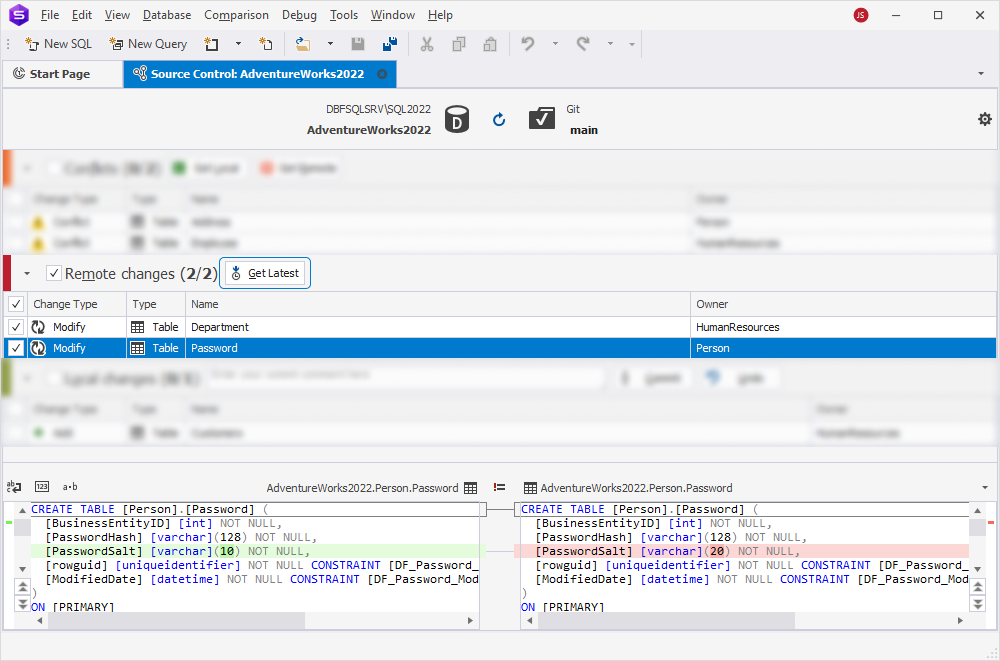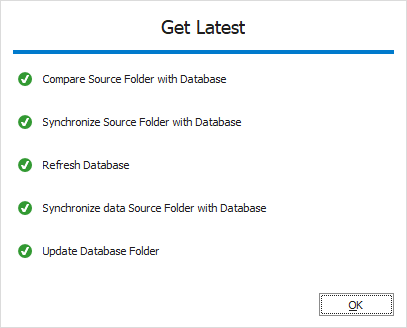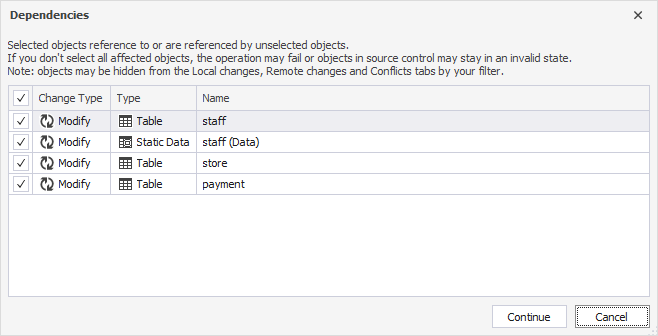Get the latest version
You can use the Get Latest operation in Source Control Manager in dbForge Studio for SQL Server to update your database with changes from the remote repository.
Note
The Get Latest operation is unavailable in the shared development model, since all developers work directly on the same database.
Get the latest changes from version control and deploy them to the database
1. In the Remote changes section, select the checkboxes next to the objects and/or static data you want to deploy, then click Get Latest.
Tip
To select all changes, select the checkbox next to Remote changes.

The Get Latest window opens, showing the stages of the operation.
2. To close the window, click OK.

Note
To prevent data loss, ensure static data is linked to source control before updating the local database or reverting changes.
Get the latest changes from dependent objects
If you select an object that depends on other objects or changes in the Remote changes section, dbForge Studio prompts you to include the related items in the update.
For example, if you add a new table and a view that selects from it, deploying changes for the view only will trigger a prompt to include the related table.

To proceed with Get Latest, click Continue.
Note
When a change affects both schema and data, data loss may occur. In such cases, dbForge Studio notifies you and prompts you to back up your database before proceeding.
Get Latest behavior
The Get Latest operation runs a deployment script that updates the linked database to match the version in the repository. The script may include:
CREATE,ALTER, orDROPstatements for database schema changesINSERT,UPDATE, orDELETEstatements for static data- Statuses for each object (Add, Modify, or Remove) as shown in the Source Control Manager
For more information, see Deploy changes when databases are linked or disconnected from source control.
